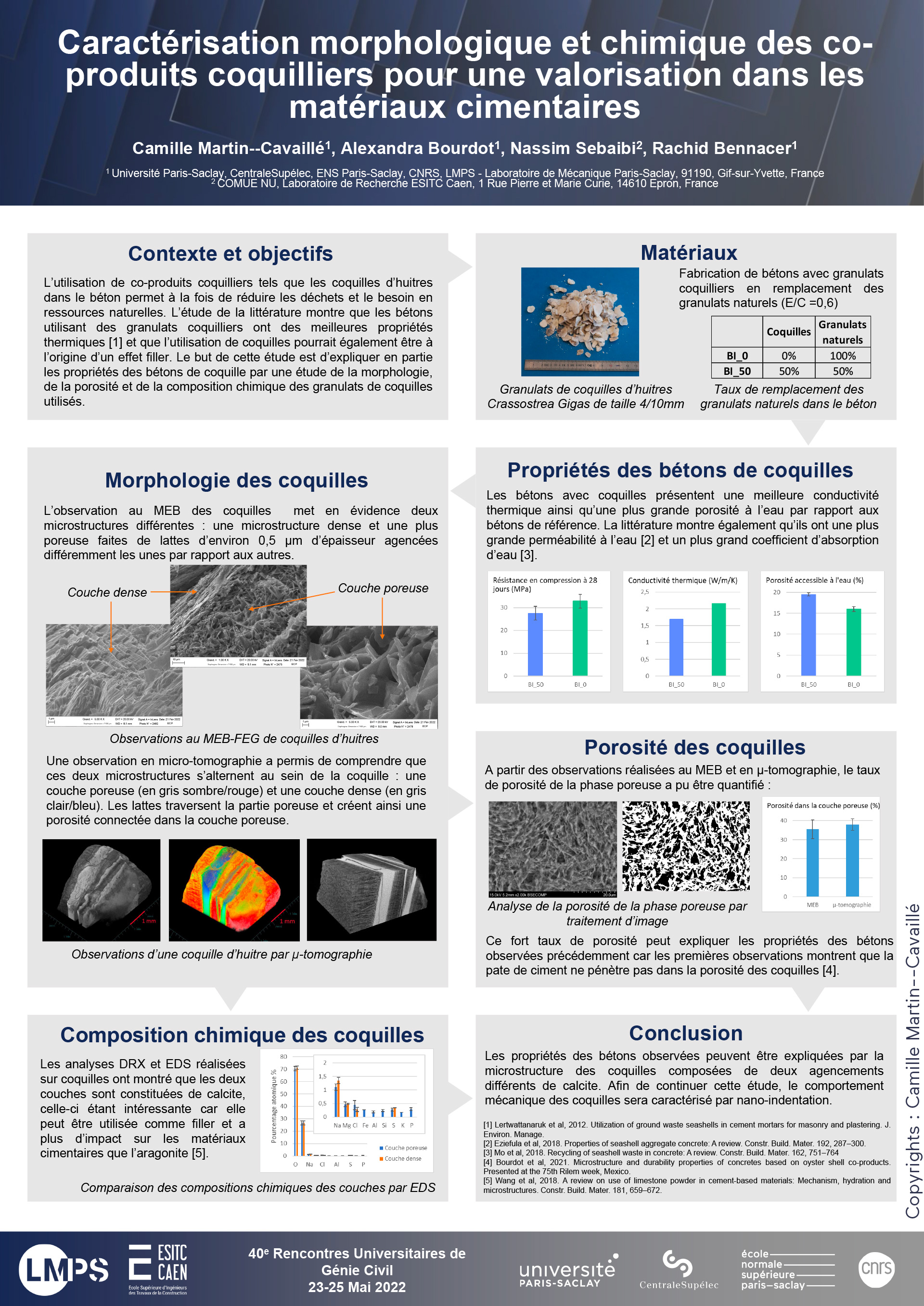Camille Martin--Cavaillé, winner in Civil Engineering

The AUGC University Conference on Civil Engineering
The 40th AUGC Civil Engineering University Conference, organised by the Institut Mines Télécom Nord Europe and the Civil Engineering and Geo-Environment Laboratory (LGCgE), was held from 23 to 25 May 2022 on the theme: "Civil Engineering, a builder of ecological, digital and societal transitions".
These days brought together teachers, researchers, teacher-researchers, student-doctors and professionals for exchanges on both training and research and highlighted the state of progress in the fields of civil engineering, in the form of oral sessions, posters or videos.
The Poster Prize
The Poster Prize is awarded to research papers presented by first year PhD students. The posters are displayed on the conference website.
Each doctoral student presents his/her poster in plenary session in 2 minutes. The participants elect their favourite poster by electronic voting.
The best poster is awarded with a prize of 150 euros.
Camille Martin Cavaillé
What is your background leading up to your PhD at LMPS?
After a preparatory class, I did my schooling at ENS Paris-Saclay, first in the SAPHIRE year and then in the Department of Teaching and Research (DER) Civil Engineering and Environment.
I followed the M1 MAISES and then the M2FESup, after which I obtained the agrégation de Sciences pour l'Ingénieur option Ingénierie des Constructions.
After that, I took a year off to work in England for Edvance on the construction of the Hinkley Point C EPR.
I then completed the M2R Durability of Materials and Structures at the Ecole des Ponts Paritech and I am now doing a thesis at the LMPS since September 2021, directed by Rachid BENNACER, supervised by Alexandra BOURDOT and co-supervised by Nassim SEBAIBI from the ESITC in Caen.
What year are you in your PhD?
I am in the first year of my thesis at the LMPS and my thesis is being carried out in collaboration with the ESITC in Caen.
Can you briefly describe the purpose of your thesis?
The aim of my thesis is to valorise shell co-products (i.e. empty shells produced by aquaculture) in concrete: this allows both to reduce waste and to reduce the need for natural resources. In my case, I use crushed oyster shells as a replacement for aggregates in concrete.
The objective of my thesis is to understand the interactions between the shell co-products and the cement matrix, to study the properties (mechanical, thermal, hygric and durability) of shell concretes and then to optimise the formulations in order to formulate a shell concrete that is both supportive and insulating.
Why did you decide to take part in the 40th University Meetings on Civil Engineering?
The AUGC (Association Universitaire de Génie Civil) organised this year, with ITM Nord Europe, the 40th Civil Engineering University Meeting, during which a poster prize was awarded to first-year doctoral students. Each doctoral student could present a poster on his or her first thesis work.
What is the subject of your poster: "Morphological and chemical characterisation of shell co-products for use in cement materials"?
The poster seeks to explain the thermal properties observed in shell concretes by studying the shells themselves. Indeed, the first experimental results on shell concretes showed that these concretes had a better thermal conductivity and a higher porosity than the reference concretes.
The poster tries to explain these results by studying the morphology, porosity and chemical composition of the shells. The studies were carried out using the laboratory's experimental facilities, including scanning electron microscopy (SEM), micro-tomography and X-ray Diffraction (XRD).
What does this award mean to you and what are your next steps?
I am very happy to have received this prize and I would like to thank my thesis director Rachid BENNACER and my supervisors Alexandra BOURDOT from the LMPS and Nassim SEBAIBI from the ESITC in Caen.
Now I wish to continue my study both on the properties of shell concretes (mechanical, thermal, hygric and durability) but also on the properties of the shells themselves in order to succeed in modelling the behaviour of shell concretes.

 Pour grossir le poster, cliquez sur l'image.
Pour grossir le poster, cliquez sur l'image.